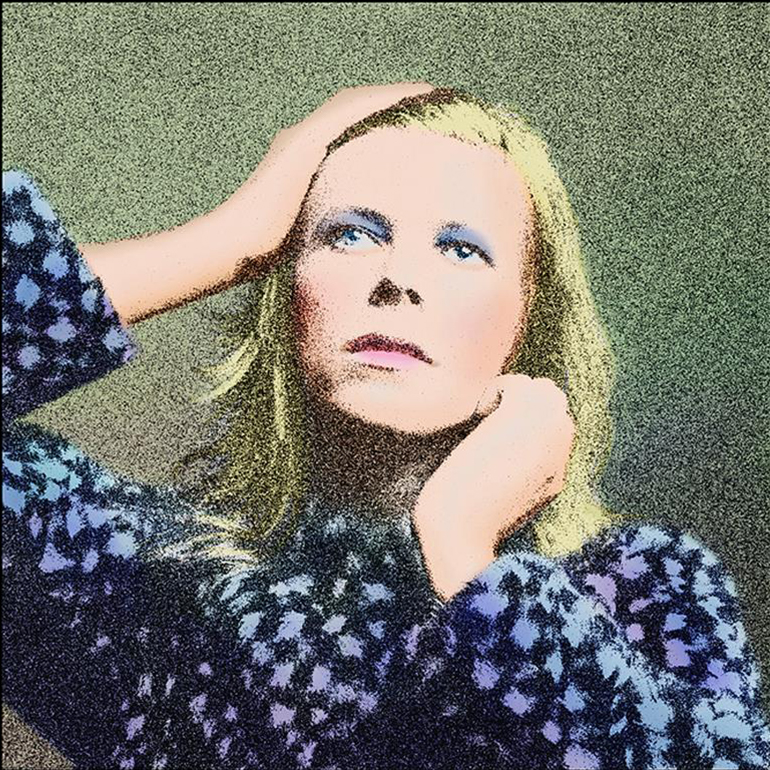Before Ziggy announced the end of the world in five years’ time, a hand reached down from a crack in the sky, vowing that all the strangers and the nightmares that came that day were indeed here to stay. Nietzsche, Crowley, and the rest of the crowd peeked through, eager to witness the first cry of who would later ascend to join them on Olympus. And the sound echoed throughout the land, producing the kind of frequencies that act as a connector between heaven and hell, Earth and outer space, the fathomable and the infinite.
This threshold was called Hunky Dory, and it hit like a second coming before the first one even happened. Though the uncanny UFO that would land with Ziggy Stardust was still a mere sighting, by 1971 the rehearsal was definitely over; as the curtain went up on opening night, the public gasped at the sight of an indelible shining armour which would both protect and act as a nuisance in the years that followed.
The very core of the David Bowie gospel is encapsulated by Hunky Dory. Opening with the promise of constant and radical changes (“my whole thing, of course, has always been changes. My vehicle has been changes. I think that’s what I’m best known for, and that is what I’ve been trying to say,” he would tell Circus Magazine‘s Ben Edmonds in 1976), it emanates a sense of a finished yet multifaceted identity by alchemically integrating the poetics of darkness (“Oh! You Pretty Things”), the space-themed utopian dream (“Life On Mars?”), and the discreet obsession with the mechanics of the art world (“Andy Warhol”).
Ultimately, it’s all about perception; what matters is how we view things, not the way they actually are. So “Song For Bob Dylan” is Bowie’s vision of Dylan. “Andy Warhol” is Bowie’s vision of the Factory crowd. Hunky Dory is about impressions, and the secret of its uniqueness lies precisely in the fact that he isn’t overly committed to accuracy. It’s as simple as abstract surpassing figurative once exact representation was demoted from its central role in art’s final destination.
He still sings his idols, but by Hunky Dory Bowie has ceased to be preoccupied with authenticity; paradoxically, that’s exactly when he starts to be truly authentic. As McCartney once admitted so himself, “good artists borrow, but great artists steal” – the fact that the quote was stolen from Picasso further proving his point. With Hunky Dory, ephemeral incarnations like the Velvet Underground in “Queen Bitch” become as natural (and often, as outrageous) as mere wardrobe changes. The world may be the wildest of stages, but Hunky Dory is the protagonist’s dressing room.
If we take into account Theodor Adorno’s aesthetic theory regarding how an artistic object of the past can be modified through something that succeeds it, we quickly understand how Bowie’s entire oeuvre relies on permanent agitation and metamorphosis. More often than not, later albums would come back to haunt his earlier work, be it by directly referencing characters, styles, and approaches, or – and perhaps more importantly – by allowing us to perceive what had been through what is.
Bowie knew that it’s by looking at the past through the eyes of the present that we are able to project the future, an elastic systematic he eventually perfected and which is particularly present in Hunky Dory. Fans would often return to the album in the years that followed as a way to fascinatingly pinpoint and acknowledge the exact moment Bowie became Bowie, since Hunky Dory stands as a crucial epiphany that portrays the birth of a star.
But it’s Bowie’s pose and allure in the cover, a direct reference to the Hollywood Golden Age and its mix of glamour, sin, and tragedy, that seals the deal with God (or the Devil) that Hunky Dory represents. As he proclaims himself as royalty, he unleashes a self fulfilling prophecy that would get him everywhere and anywhere in the years to come. Hunky Dory isn’t the first time Bowie planted the seed; but this time around he was sure it would grow into a monster.

